rear view mirror TOYOTA YARIS HATCHBACK 2008 Owners Manual
[x] Cancel search | Manufacturer: TOYOTA, Model Year: 2008, Model line: YARIS HATCHBACK, Model: TOYOTA YARIS HATCHBACK 2008Pages: 400, PDF Size: 6.56 MB
Page 5 of 400
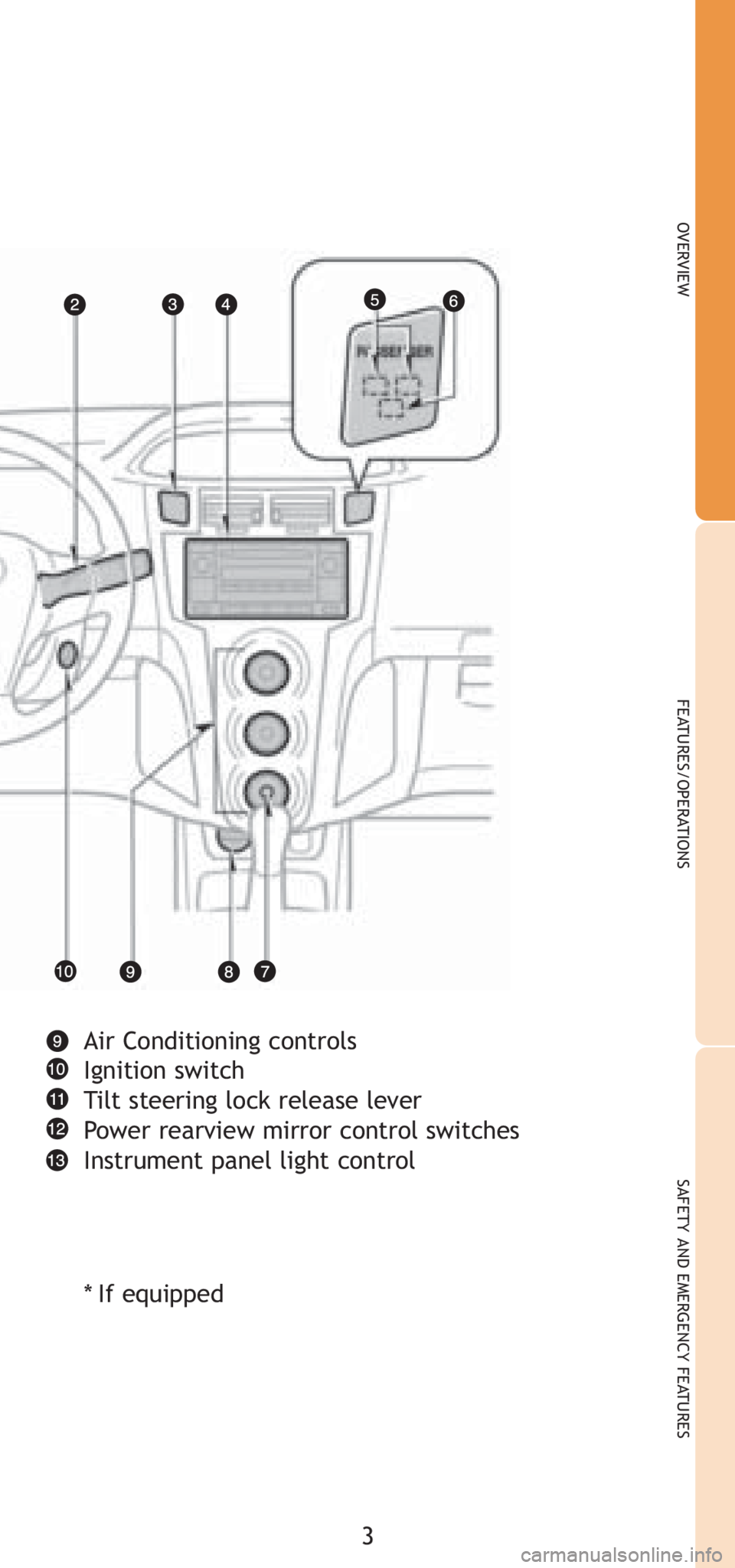
3
OVERVIEW
FEATURES/OPERATIONS
SAFETY AND EMERGENCY FEATURES
Air Conditioning controls
Ignition switch
Tilt steering lock release lever
Power rearview mirror control switches
Instrument panel light control
* If equipped
Page 28 of 400
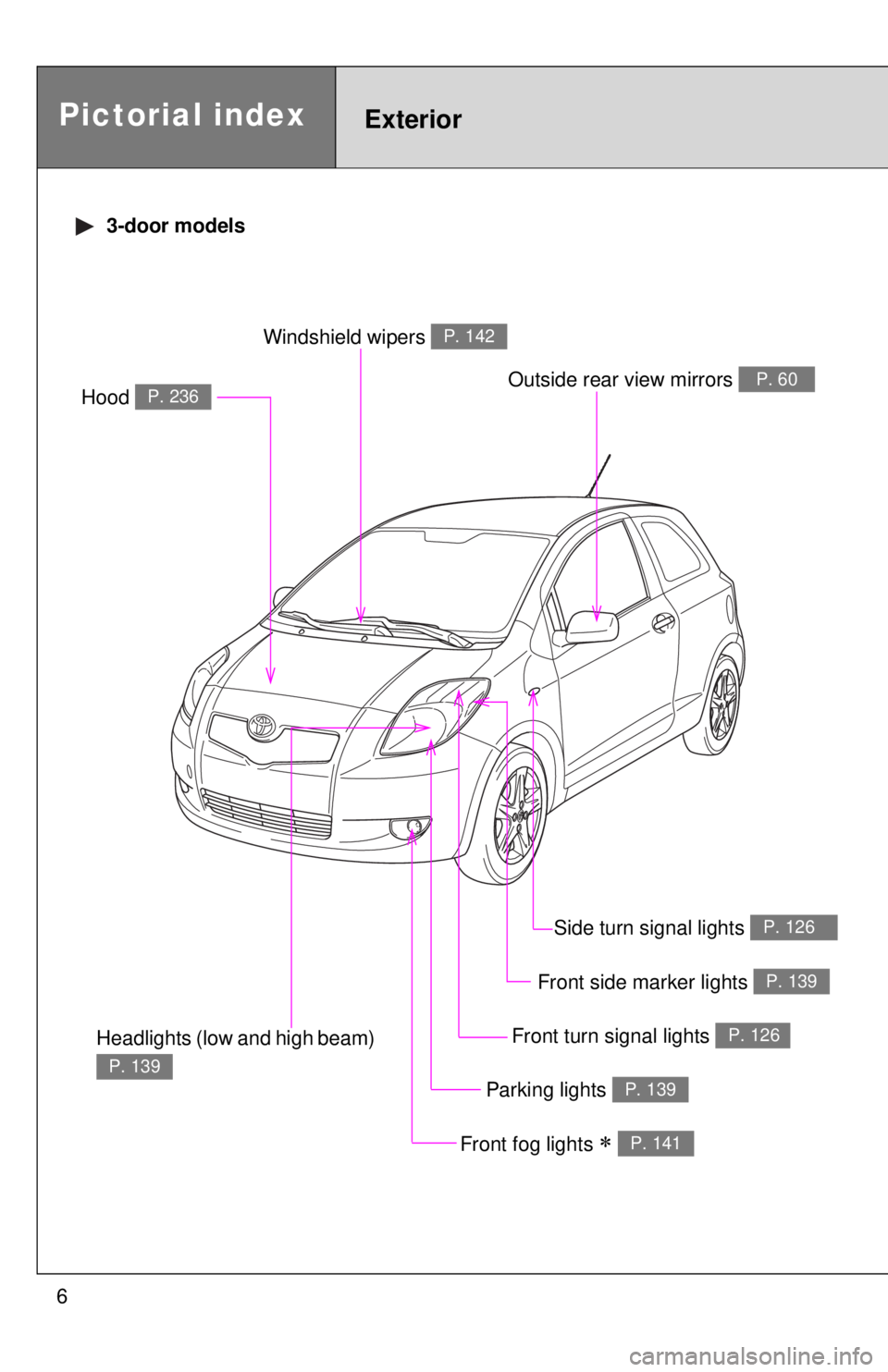
6
Headlights (low and high beam)
P. 139
Pictorial indexExterior
Front fog lights ∗ P. 141
Hood P. 236
Windshield wipers P. 142
Outside rear view mirrors P. 60
Parking lights P. 139
Front turn signal lights P. 126
3-door models
Front side marker lights P. 139
Side turn signal lights P. 126
Page 30 of 400
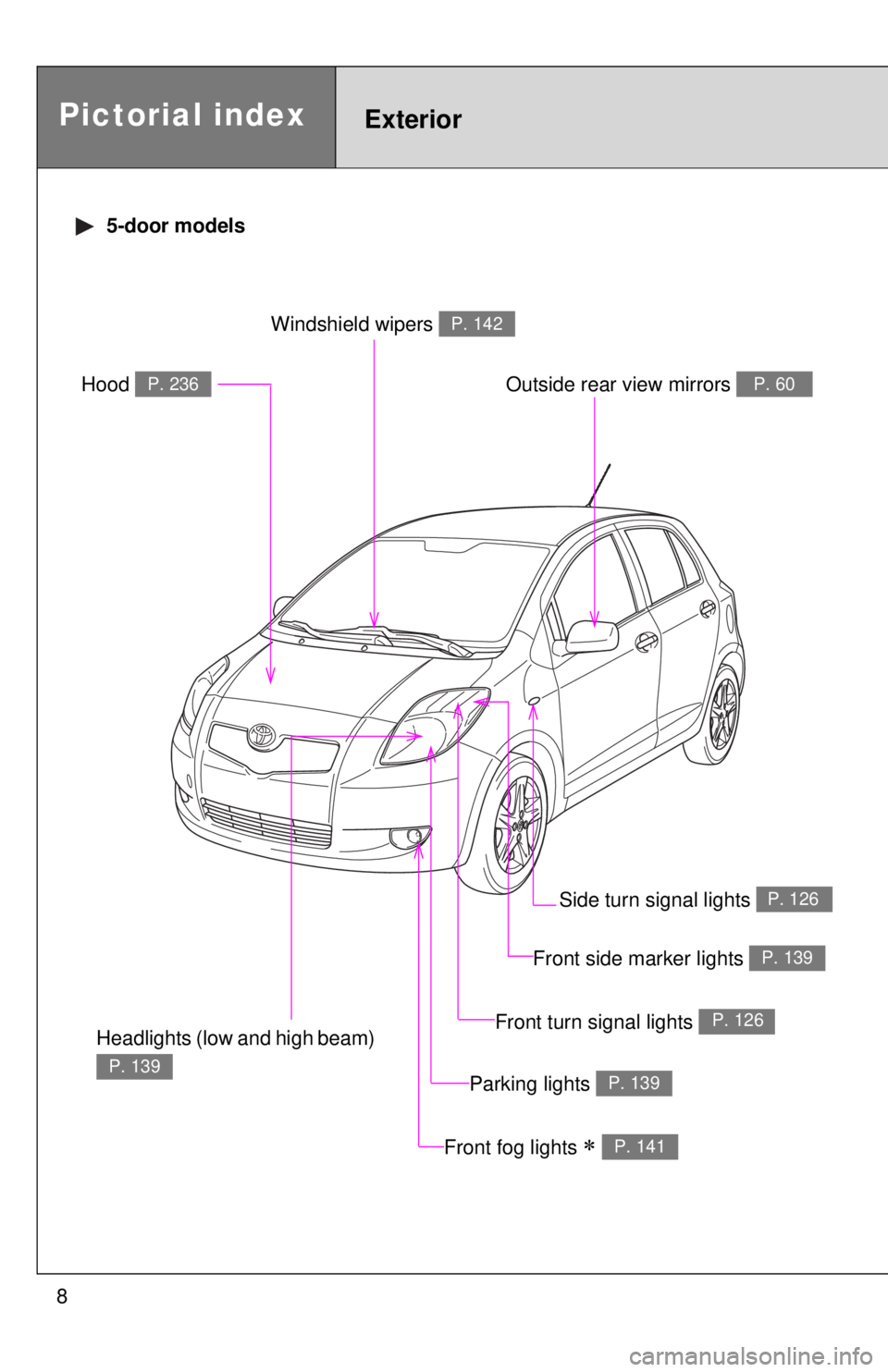
8
Pictorial indexExterior
5-door models
Headlights (low and high beam)
P. 139
Front fog lights ∗ P. 141
Hood P. 236
Windshield wipers P. 142
Outside rear view mirrors P. 60
Parking lights P. 139
Front turn signal lights P. 126
Front side marker lights P. 139
Side turn signal lights P. 126
Page 34 of 400
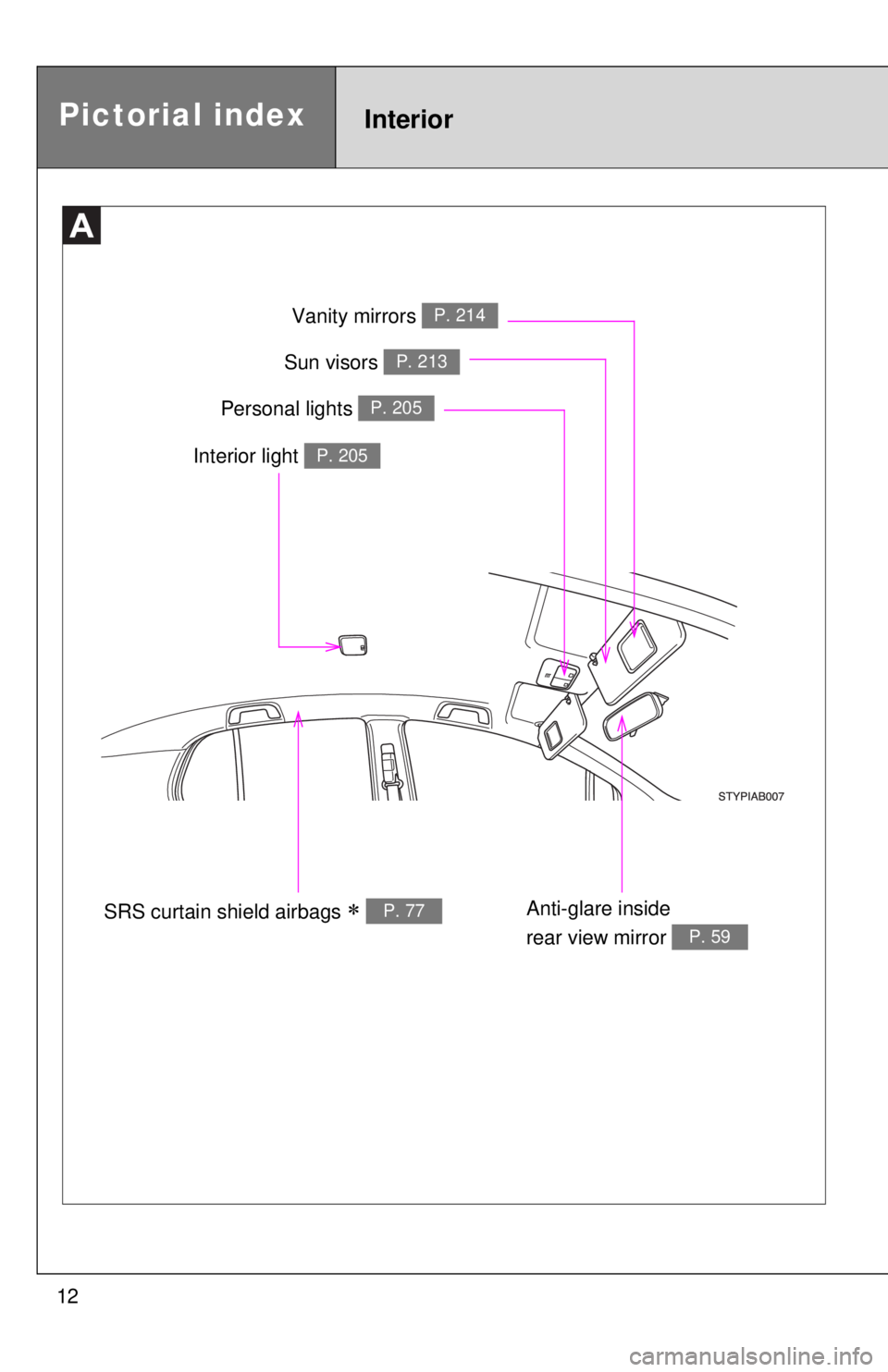
12
Pictorial indexInterior
Anti-glare inside
rear view mirror
P. 59
Interior light P. 205
Vanity mirrors P. 214
Personal lights P. 205
Sun visors P. 213
SRS curtain shield airbags ∗ P. 77
Page 41 of 400
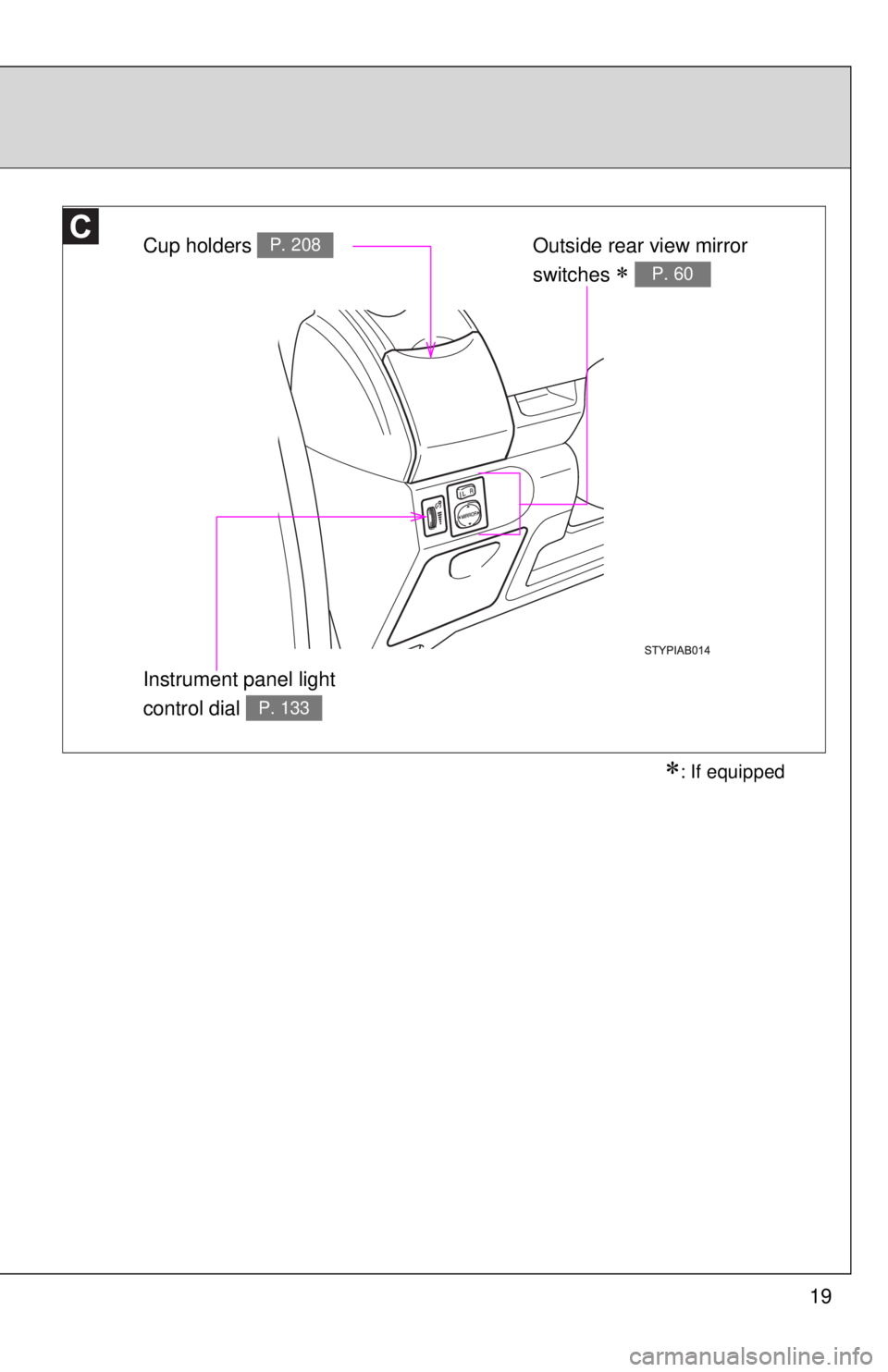
19
∗: If equipped
Cup holders P. 208Outside rear view mirror
switches
∗ P. 60
Instrument panel light
control dial
P. 133
Page 75 of 400
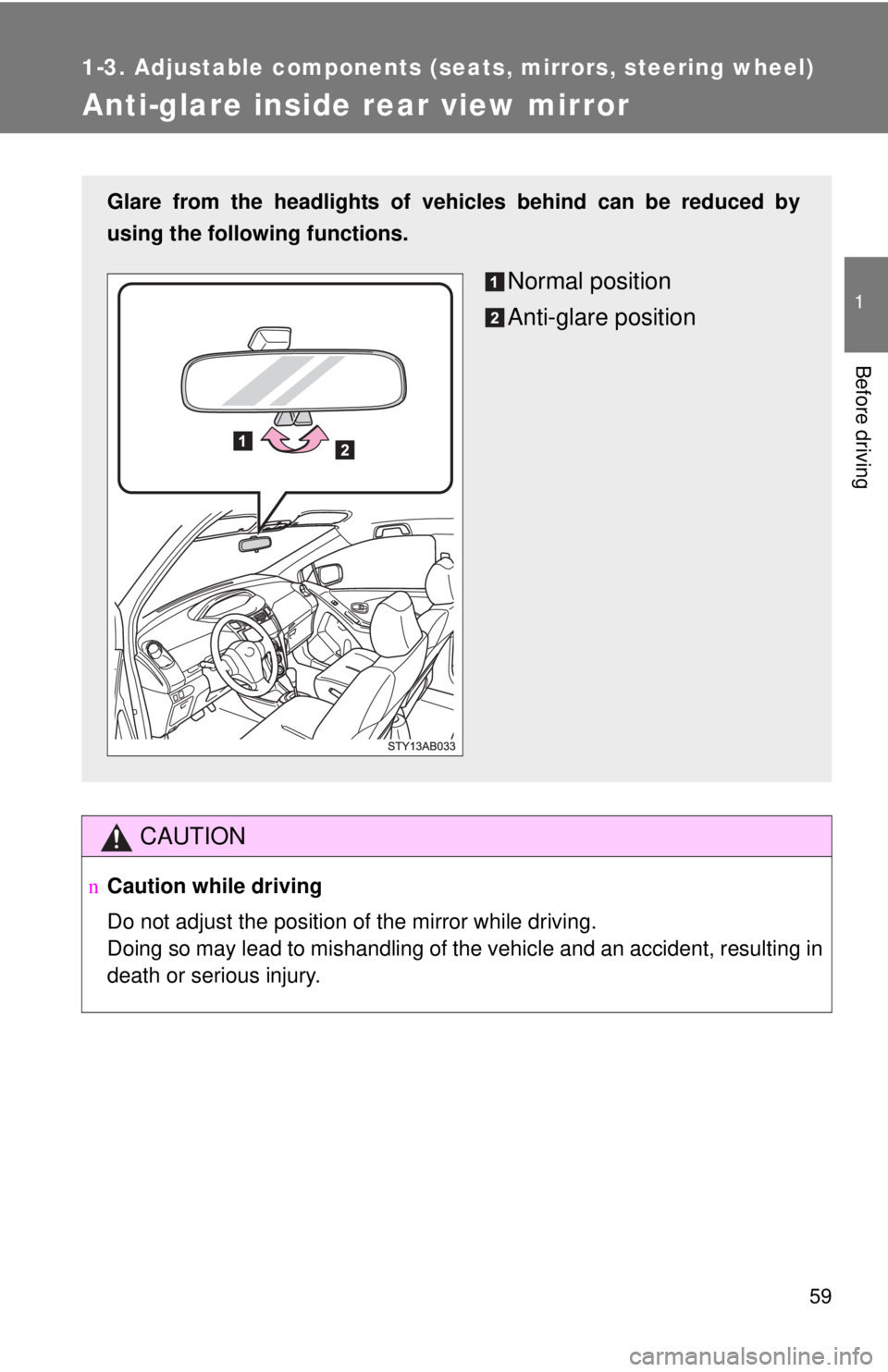
59
1
1-3. Adjustable components (seats, mirrors, steering wheel)
Before driving
Anti-glare inside rear view mirror
CAUTION
nCaution while driving
Do not adjust the position of the mirror while driving.
Doing so may lead to mishandling of the vehicle and an accident, resulting in
death or serious injury.
Glare from the headlights of vehicles behind can be reduced by
using the following functions.
Normal position
Anti-glare position
Page 76 of 400
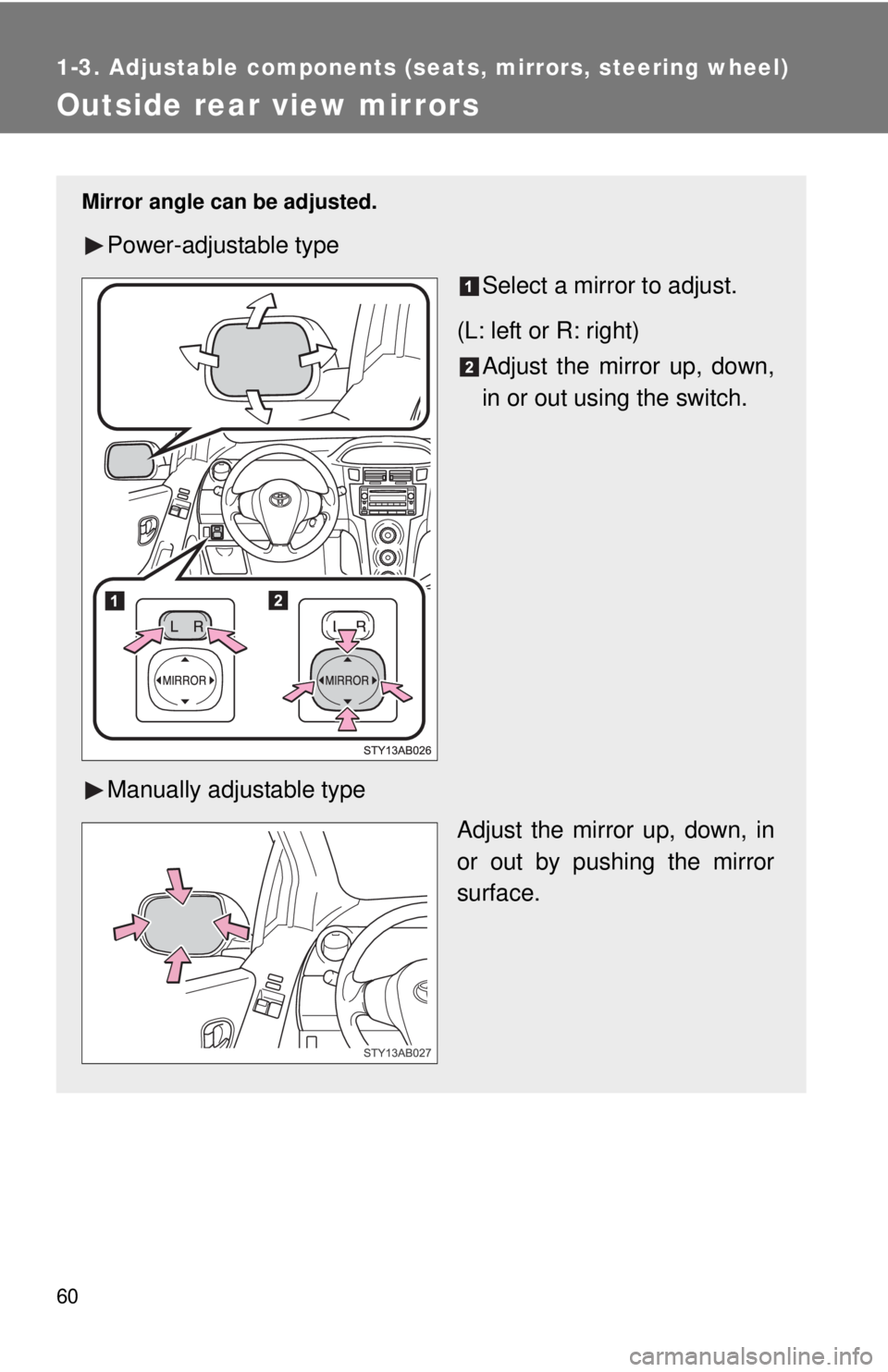
60
1-3. Adjustable components (seats, mirrors, steering wheel)
Outside rear view mirrors
Mirror angle can be adjusted.
Power-adjustable type
Select a mirror to adjust.
(L: left or R: right) Adjust the mirror up, down,
in or out using the switch.
Manually adjustable type Adjust the mirror up, down, in
or out by pushing the mirror
surface.
Page 129 of 400

114 2-1. Driving procedures
CAUTION
nWhen driving the vehicle
lDo not shift the shift lever to N while the vehicle is moving.
Doing so may cause the engine brake to not operate properly and lead to
an accident.
l Do not turn the engine off while driving.
The power steering and brake booster systems will not operate properly if
the engine is not running.
l Use engine braking (downshift) to maintain a safe speed when driving
down a steep hill.
Using the brakes continuously may cause the brakes to overheat and lose
effectiveness. ( →P. 123,125)
l When stopped on an inclined surface, use the brake pedal and parking
brake to prevent the vehicle from rolling backward or forward and causing
an accident.
l Do not adjust the position of the steering wheel, the seat, or the inside or
outside rear view mirrors while driving.
Doing so may result in a loss of vehicle control that can cause accidents
that may result in death or serious injury.
l Always check that all passengers' arms, heads or other parts of their bod-
ies are not outside the vehicle, as this may result in death or serious injury.
l Do not drive in excess of the speed limit. Even if the legal speed limit per-
mits it, do not drive over 85 mph (140 km/h) unless your vehicle has high-
speed capability tires. Driving over 85 mph (140 km/h) may result in tire
failure, loss of control and possible injury. Be sure to consult a tire dealer
to determine whether the tires on your vehicle are high-speed capability
tires or not before driving at such speeds.
n When driving on slippery road surfaces
lSudden braking, acceleration and steering may cause tire slippage and
reduce your ability to control the vehicle, resulting in an accident.
l Sudden changes in engine speed, such as engine braking caused by up-
shifting or down-shifting, may cause the vehicle to skid, resulting in an
accident.
Page 166 of 400
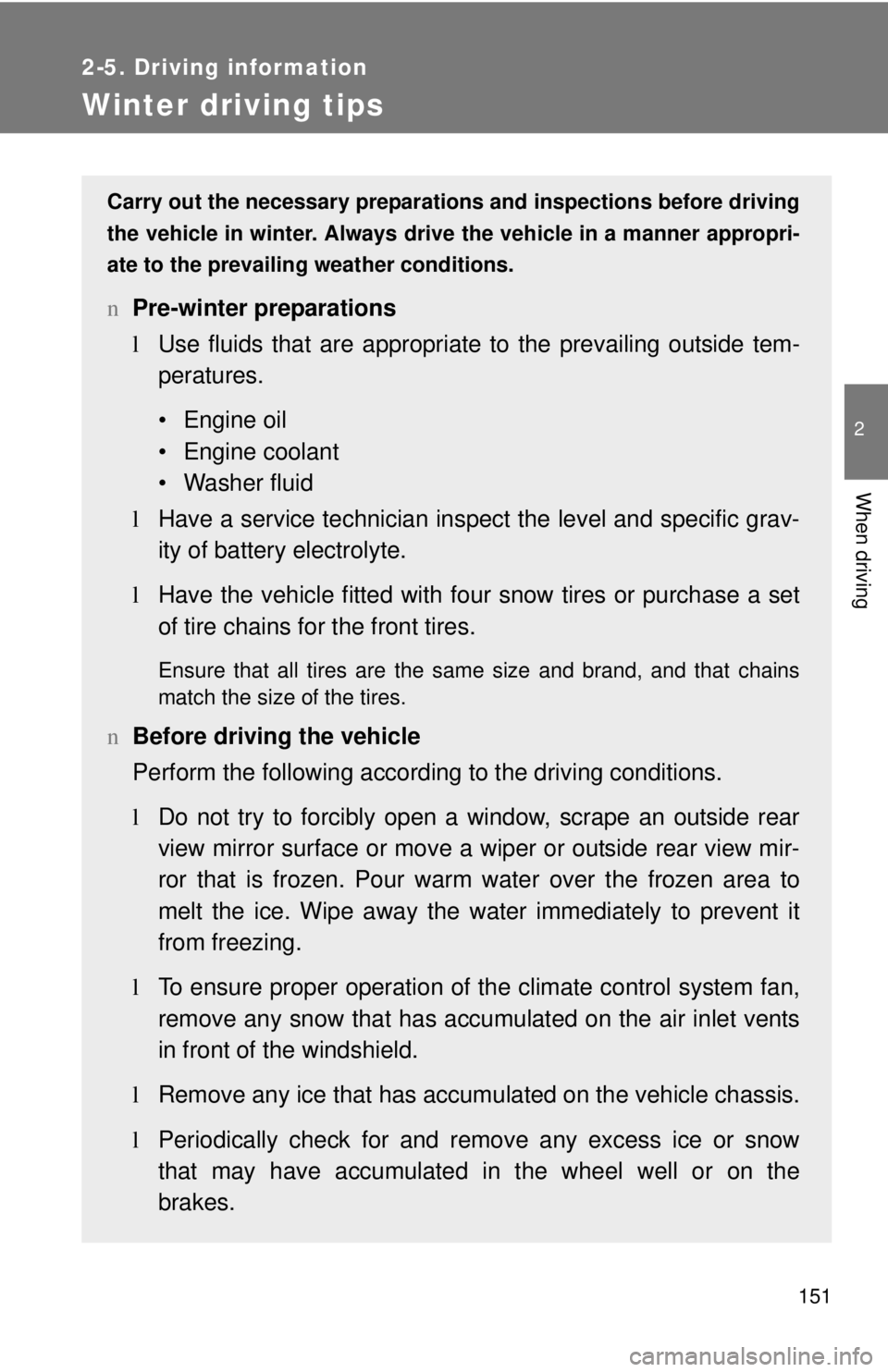
151
2-5. Driving information
2
When driving
Winter driving tips
Carry out the necessary preparations and inspections before driving
the vehicle in winter. Always drive the vehicle in a manner appropri-
ate to the prevailing weather conditions.
n Pre-winter preparations
lUse fluids that are appropriate to the prevailing outside tem-
peratures.
• Engine oil
• Engine coolant
• Washer fluid
l Have a service technician inspect the level and specific grav-
ity of battery electrolyte.
l Have the vehicle fitted with four snow tires or purchase a set
of tire chains for the front tires.
Ensure that all tires are the same size and brand, and that chains
match the size of the tires.
nBefore driving the vehicle
Perform the following according to the driving conditions.
lDo not try to forcibly open a window, scrape an outside rear
view mirror surface or move a wiper or outside rear view mir-
ror that is frozen. Pour warm water over the frozen area to
melt the ice. Wipe away the water immediately to prevent it
from freezing.
l To ensure proper operation of th e climate control system fan,
remove any snow that has accumulated on the air inlet vents
in front of the windshield.
l Remove any ice that has accumu lated on the vehicle chassis.
l Periodically check for and remove any excess ice or snow
that may have accumulated in the wheel well or on the
brakes.
Page 173 of 400

158 2-5. Driving information
Towing a trailerConsult your Toyota dealer for further information about additional
requirements such as a towing kits, etc.
n Before towing
Check that the following conditions are met:
lEnsure that your vehicle’s tires are properly inflated. ( →P. 345)
l Trailer tires should be inflated according to the trailer manufacturer’s rec-
ommendation.
l All trailer lights work to be legal.
l Confirm all lights work each time you connect them.
l Check that your vehicle remains level when a loaded or unloaded trailer
is hitched. Do not drive if the vehicle is not level, and check for improper
tongue load, overloading, worn suspension, or other possible causes.
l Make sure the trailer cargo is securely loaded.
l Check that your rear view mirrors conform to any federal, state/provincial
or local regulations. If they do not, install rear view mirrors appropriate for
towing purposes.
n Break-in schedule
lToyota recommends that you do not use a new vehicle or a vehicle with
any new power train components (engine, transmission, differential,
wheel bearings, etc.) to tow a trailer for the first 500 miles (800 km) of
driving.
n Maintenance
lIf you tow a trailer, your vehicle will require more frequent maintenance
due to the additional load. (See “Scheduled Maintenance Guide” or
“Owner’s Manual Supplement”.)
l Retighten the fixing bolts of the towing ball and bracket after approxi-
mately 600 miles (1000 km).